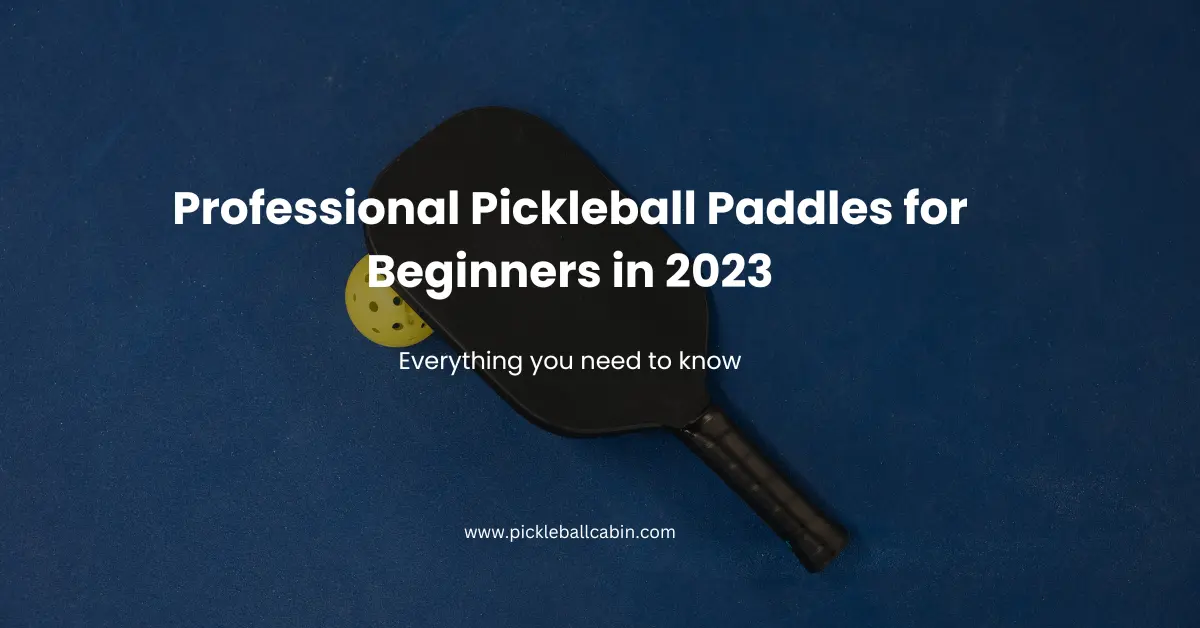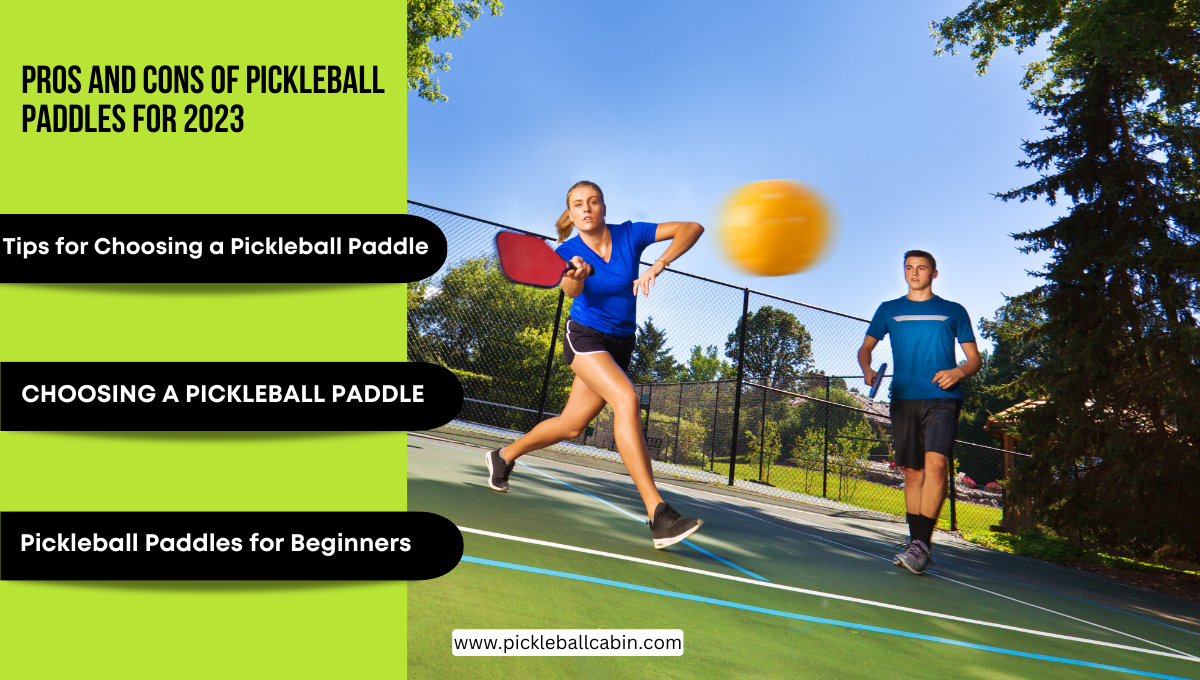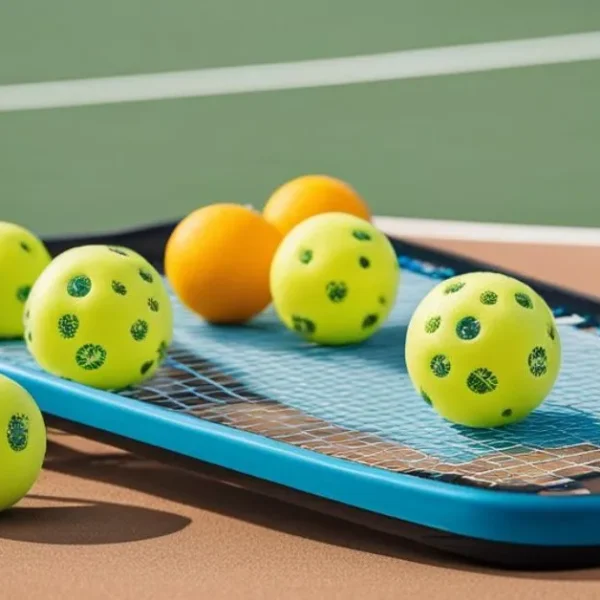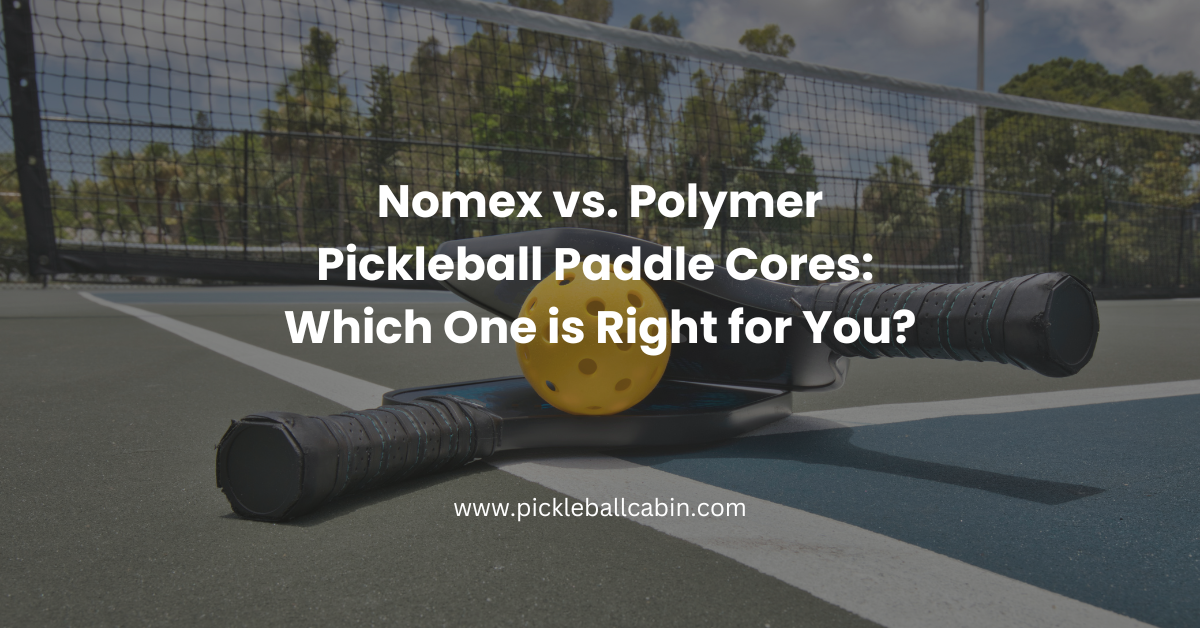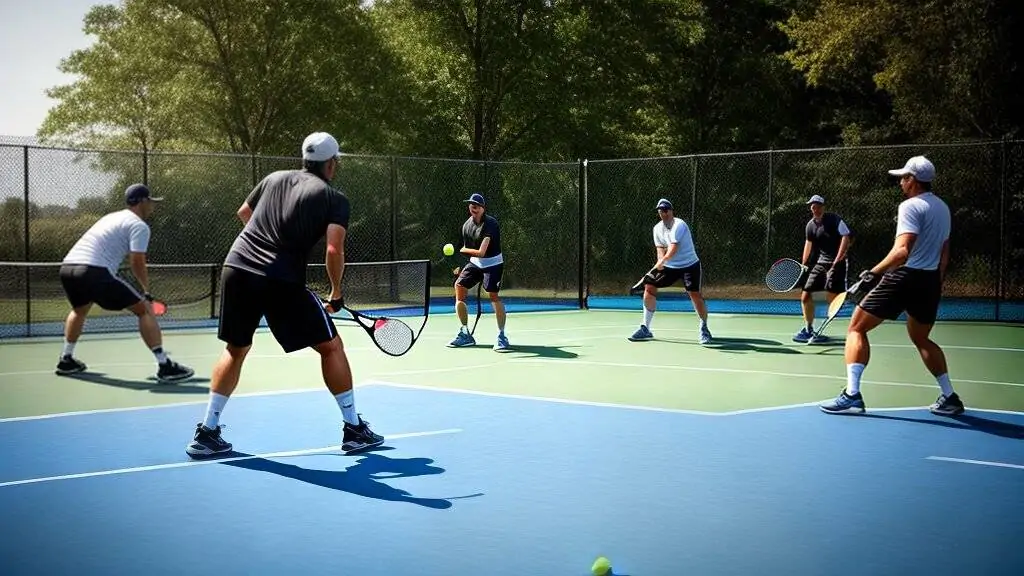As a pickleball player, I know that proper grip technique can make a huge difference in your game. How you hold your paddle can affect your control, power, and accuracy on the court. That’s why mastering how to grip a pickleball paddle is essential for optimal performance.
There are different grip types available for pickleball paddles, each with its own advantages and disadvantages. Understanding these grip types is the first step towards finding the one that suits you best.
Key Takeaways
- Proper grip technique is crucial for optimal pickleball performance.
- Different grip types are available for pickleball paddles.
- Mastering how to grip a pickleball paddle takes time and practice.
Understanding Different Grip Types for Pickleball Paddles
If you want to excel in pickleball, mastering the proper grip technique for your paddle is essential. There are various grip types commonly used in pickleball, each with its own set of advantages and disadvantages. Here are the most popular ones:
| Grip Type | Description |
|---|---|
| Continental grip | This grip involves placing your thumb and index finger on the handle in a relaxed V-shape. It is ideal for serving and volleys, as it allows for a full range of motion and precision. |
| Eastern forehand grip | This grip requires you to place your hand on the paddle with your index knuckle on the backside of the handle. It is useful for forehand shots, as it provides stability and control. |
| Western forehand grip | Similar to the Eastern forehand grip, this grip involves placing your hand on the paddle with your index finger knuckle on the backside of the handle. The difference lies in the position of your hand, which is rotated more towards the right. It is useful for adding spin to the ball. |
| Semi-Western grip | This grip is a combination of the Eastern and Western forehand grips. It involves placing your index finger knuckle on the backside of the handle, with your hand slightly rotated to the right. It allows for added spin and power in forehand shots. |
It is recommended to experiment with different grip types to see which one works best for you. You may find that a combination of grips works well for different shots.
Finding the Right Grip Technique
When choosing a grip technique, it is important to consider your playing style and personal preferences. For example, if you prefer a more aggressive playing style, you may opt for a grip that allows for added power and spin. Alternatively, if you prefer a defensive playing style, a grip that prioritizes control and stability may be more suitable.
It is also important to pay attention to your hand size and shape when selecting a paddle. You want to make sure that the paddle handle is comfortable and allows for a secure grip. Some paddles offer different handle shapes and sizes, so it may be worth experimenting with different options.
Mastering Pickleball Paddle Grip: Control, Power, And Accuracy For Optimal Performance
Advantages and Disadvantages of Different Grip Types
Each grip type has its own set of advantages and disadvantages. For example, the Continental grip offers a full range of motion and precision but may be less stable than other grips. The Eastern forehand grip provides excellent stability and control but may limit your range of motion.
It is essential to understand the advantages and disadvantages of different grip types to make an informed decision when selecting a grip style. You should also consider experimenting with different grip techniques to find what works best for your playing style and personal preferences.
Proper Grip Techniques for Pickleball Beginners
If you are new to pickleball, it’s essential to get your grip right from the start. Proper grip can greatly improve your performance and help prevent injury. Here’s how to achieve the correct grip:
- Hold the paddle with your non-dominant hand: If you’re right-handed, use your left hand to hold the paddle. Place your hand on the handle so that the edge of the paddle is facing up and the face is pointing down.
- Position your hand: Place the base of your index finger on the edge of the paddle nearest to you. Your hand should be relaxed and your fingers should be comfortably wrapped around the handle.
- Apply pressure: Grip the handle firmly with your fingers, but be careful not to grip too tightly as this can lead to tension in your hand and arm muscles. You should be able to wiggle your fingers a little.
- Distribute pressure evenly: Make sure the pressure is evenly distributed across your fingers, from the base of your index finger to your pinky finger.
- Adjust for comfort: Experiment with the placement of your hand and fingers until you find a position that feels comfortable and secure. You may also want to try adjusting your grip for different shots and playing styles.
Remember to relax your grip between shots to prevent fatigue and tension. With practice, finding the right grip will become second nature, and you’ll be able to focus on improving your game.
How To Measure Grip Size For Pickleball Paddle: Guide & Tips
Advanced Grip Techniques for Enhanced Performance
As a seasoned pickleball player, I understand the importance of mastering grip techniques for enhancing my performance on the court. Below, I will share some advanced grip techniques that have helped me take my game to the next level.
Relaxed grip: To maximize power and control, it’s important to maintain a relaxed grip on your paddle. This allows for more natural movement and flow of the wrist, resulting in a smoother swing and greater accuracy. Avoid gripping the paddle too tightly, as this can cause unnecessary tension and fatigue in your hand and forearm.
Wrist positioning: Proper wrist positioning can have a significant impact on your shots. For forehand shots, try to keep your wrist in a neutral position, parallel to the paddle face. For backhand shots, rotate your wrist slightly inward to achieve a comfortable and controlled grip. Experiment with different wrist positions to find what works best for you.
| Grip Adjustments | Control | Power | Accuracy |
|---|---|---|---|
| Semi-Western grip for top spin | 🟢 | 🟡 | 🟢 |
| Eastern forehand grip for counter punch | 🟢 | 🟡 | 🟢 |
| Continental grip for serve | 🟢 | 🟢 | 🟢 |
Adjusting grip for different shots: Depending on the shot you’re making, you may need to adjust your grip slightly to optimize your technique. For example, a semi-western grip can be effective for top spin shots, while an eastern forehand grip may be better for a counter punch. Experiment with different grip adjustments to see how they affect your control, power and accuracy (see above table).
Grip pressure: Varying your grip pressure can also impact your shots. For example, you may need a firmer grip for serves, while a looser grip may be better for volley shots. Experiment with different grip pressures to see how they affect your performance on the court.
By honing these advanced grip techniques, you can gain a competitive edge on the pickleball court and take your game to the next level. Remember to practice regularly and adjust your grip as necessary to continually refine your skills.
Fine-Tuning Your Grip for Optimal Performance
Now that you have a good understanding of the different grip types and techniques, it’s time to fine-tune your grip to maximize your performance on the pickleball court.
First, experiment with grip pressure. A looser grip can provide more power and comfort, while a tighter grip can offer more control and precision. Find a balance that works for you and adjust your grip pressure as needed for different shots and playing situations.
Next, consider finding the right paddle size and handle shape for your hand. A paddle that is too big or small can make it difficult to achieve a proper grip and control the ball. Look for a paddle with a comfortable grip that fits your hand well and allows you to fully engage your fingers and wrist.
If you find your hands getting sweaty during play, try using grip aids such as overgrips or resin. These products can provide a more secure grip and prevent the paddle from slipping out of your hand.
Remember, grip refinement is an ongoing process. Keep experimenting with different grip techniques and adjustments to find what works best for you. The right grip can make a huge difference in your pickleball performance, so don’t be afraid to put in the time and effort to get it right.
Conclusion
In conclusion, mastering the proper grip for your pickleball paddle is essential for optimal performance on the court. Through this article, we have explored the different grip types available, from the Continental grip to the Western forehand grip, and discussed the advantages and disadvantages of each. We have also provided tips and techniques for beginners and advanced players alike, such as proper hand positioning, relaxed grip, and adjusting the grip for different shots.
However, the process of finding the right grip for your individual playing style is ongoing and requires experimentation and practice. It is important to be open to making adjustments and trying new techniques in order to refine your grip and improve your performance.
Remember, finding the right grip is not a one-size-fits-all solution. It requires awareness of your own hand size, strength, and flexibility, as well as understanding the mechanics of your shots and playing style. By continuing to learn and hone your grip, you can take your pickleball game to the next level.
Thank you for taking the time to read this article. I hope you found it helpful and informative. Happy pickleballing!
FAQ
Q: Why is proper grip important in pickleball?
A: Proper grip is important in pickleball because it affects your control, power, and accuracy on the court. A secure and comfortable grip allows you to better handle the paddle and execute shots with precision.
Q: What are the different grip types for pickleball paddles?
A: The different grip types for pickleball paddles include the Continental grip, Eastern forehand grip, Western forehand grip, and Semi-Western grip. Each grip type has its advantages and disadvantages, and players can choose the one that suits their playing style best.
Q: How do I achieve the correct grip as a beginner?
A: As a beginner, achieving the correct grip involves proper hand positioning, finger placement, and pressure distribution. It’s important to follow step-by-step instructions and practice to develop muscle memory for the correct grip.
Q: Are there advanced grip techniques for experienced players?
A: Yes, advanced players can benefit from techniques such as a relaxed grip, proper wrist positioning, and adjusting the grip for different shots and playing styles. These techniques can help improve control, power, and accuracy on the pickleball court.
Q: How can I fine-tune my grip for optimal performance?
A: To fine-tune your grip, you can experiment with grip pressure, find the right paddle size and handle shape for your hand, and use grip aids such as overgrips or resin. Additionally, addressing challenges like sweaty hands and maintaining a secure grip can further optimize your performance.

